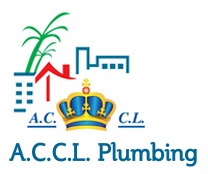Drought-tolerant landscaping is an innovative approach to gardening that focuses on minimizing water usage while maintaining aesthetic appeal. By incorporating water-efficient practices and plants, homeowners can create beautiful outdoor spaces that not only conserve water but also reduce maintenance efforts.
Benefits of Drought-Tolerant Landscaping
– Water Conservation: Drought-tolerant landscaping can reduce water usage by 50-70%, making it an ideal solution for regions prone to drought or water restrictions.
– Low Maintenance: Drought-tolerant plants require less watering, pruning, and fertilizing, reducing the need for frequent maintenance.
– Cost Savings: By conserving water, homeowners can lower their water bills and save money on maintenance costs.
– Environmental Sustainability: Drought-tolerant landscaping promotes eco-friendly practices, reducing runoff and pollution.¹
Design Elements of Drought-Tolerant Landscaping
– Native Plants: Incorporate native plants that are naturally adapted to local climate and soil conditions, requiring minimal watering and care. Examples include California Poppy, Purple Coneflower, and Desert Marigold.
– Succulents and Cacti: These iconic plants store water in their leaves and stems, enabling them to survive long dry periods. Popular options include Aloe Vera, Agave, and Echeveria.
– Drought-Tolerant Grasses: Replace traditional turf with low-water alternatives like Buffalo Grass, Zoysia Grass, or Blue Grama Grass.
– Hardscaping: Incorporate permeable pavers, gravel pathways, and decorative rocks to reduce water usage and promote groundwater recharge.
– Efficient Irrigation Systems: Use drip irrigation systems or soaker hoses that deliver water directly to plant roots, reducing evaporation and runoff.² ³
Tips for Creating a Drought-Tolerant Landscape
– Group Plants by Water Needs: Hydrozoning ensures that each zone receives the right amount of water, reducing waste and promoting efficient irrigation.
– Mulch and Compost: Apply mulch to retain soil moisture and suppress weed growth. Add organic matter like compost to improve soil structure and promote water retention.
– Rainwater Harvesting: Collect and store rainwater in barrels or cisterns for later use in irrigation, reducing reliance on municipal water supplies.
– Smart Irrigation Controllers: Install smart controllers that adjust watering schedules based on weather conditions, reducing water waste and promoting efficient irrigation.⁴
By incorporating these design elements and tips, homeowners can create stunning drought-tolerant landscapes that conserve water, reduce maintenance, and promote environmental sustainability.

